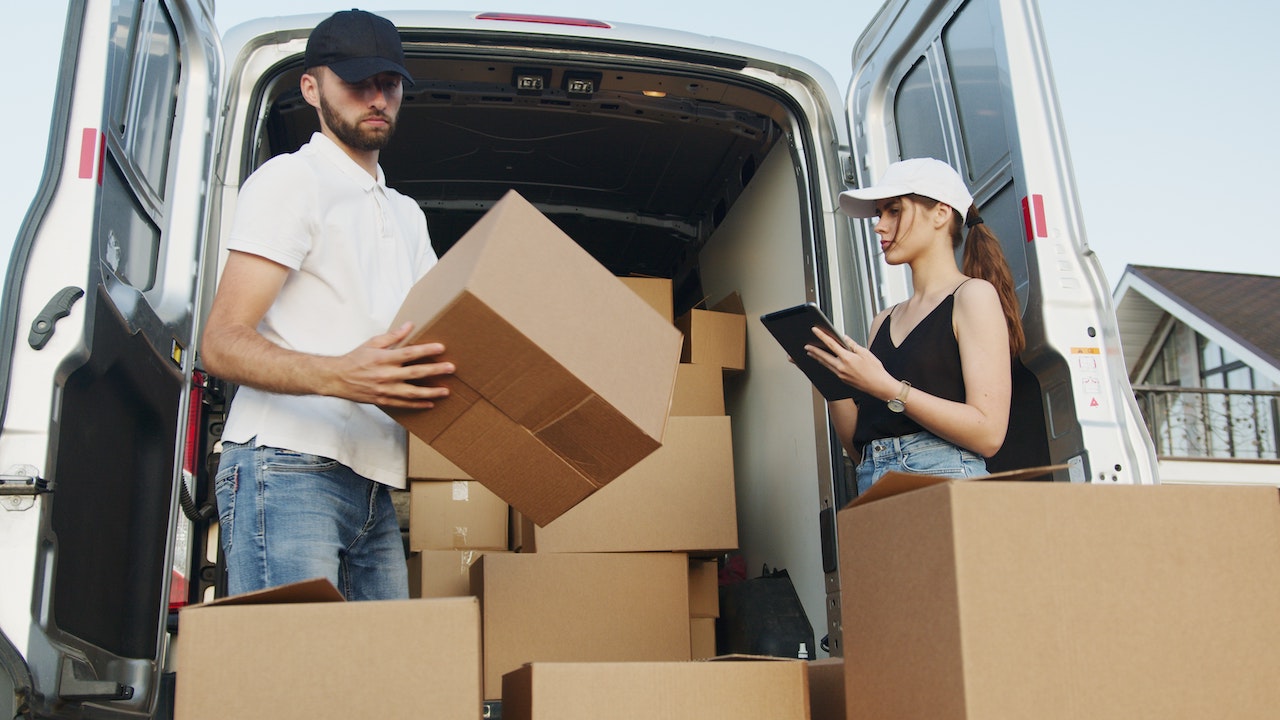If you’re moving house, hiring a van can make things much easier, and a lot more cost-effective.
In this post we’ll share some essential tips for preparing and packing a van for moving.
While hiring a van often comes with insurance, If you are thinking of borrowing a van from a friend or family member, don’t forget that you’ll need appropriate insurance cover! We can help you get instant online temporary van insurance to last from one hour to 28 days. Get a free quote online today.
What Size Can Do You Need to Move House?
When it comes to using a van for a move, you need to ensure that the van you choose will be big enough to move everything you need in as few trips as possible. But you don’t want it too big either, as it’ll cost more to hire, use more fuel, could result in your belongings moving around in the back and could make access difficult too.
But if your van is too small, then you’ll have to make a greater number of trips between your old place and your new place. And if you’re moving a considerable distance, this means your move will take you much longer than you originally thought.
Or even worse, if your van’s too small it might mean that you simply don’t have enough room to transport some of your bigger and bulkier items of furniture. This might mean you’d have to book a specialist removal company at the last minute, which is obviously going to cost you.
So before you hire or borrow a van, make a list of all the things you need to move, and take the time to measure the height, width, and length of every item. This will give you an idea of the overall volume of your personal possessions, which will make it easier to choose a van that’s fit for purpose.
How to Prepare Your Belongings For Moving House
Disassemble Furniture
This won’t be possible with all of your furniture. But whenever you can, take your furniture apart before you move it. A stack of panels and doors will take up a lot less space than a fully assembled wardrobe.
When disassembling an item of furniture, put all the screws, fixtures, and fittings in a bag. Then you can either tie it safely and securely to part of the furniture itself, or else you can add a clear label to the bag saying where the parts are from. The key is to ensure you can match the right parts with the right furniture when you’re in your new place.
Moving Boxes Are Better Than Bags
When packing your personal belongings, sturdy cardboard or plastic boxes are much better than bags. Not only are boxes more likely to protect your belongings from damage, they’re also stackable, which will allow you to make use of every inch of available space in your moving van.
How to Pack Your Van For Moving House
Packing your van isn’t just about making it as efficient as possible, it’s also about making sure your items are secure once you get on the road. Starting with heavy items, at the back and bottom of the van and loading boxes evenly should help reduce movement and breakages.
Follow our steps below for making your van for moving house:
Start With The Heavy Items
Load your heavier items before you load anything else – fridges, freezers, ovens, washing machines, and so on. Make sure they’re upright and balanced and place them as far up against the back wall of the van as you can. Secure them in place if you can: you don’t want them to move around in transit and crush everything else.
Next Do The Longer Items
Once you’ve moved the heaviest items to the back of the van, load some longer items along the side walls – such as mattresses, tables, headboards, and sofas. This will help further secure the heavy items at the back of the van, while giving you plenty of space in the middle for the rest of your stuff.
Next, Your Heavier Boxes – Then Your Lighter Boxes
Place your heaviest boxes on the floor of your van, sandwiched between your heavy possessions at the back and your longer items on the sides. This will stop them from moving around, and it will provide a sturdy surface on which to stack your lighter boxes.
Look for alcoves and cavities in which to place loose boxes, such as underneath tables, to make them even more secure.
Fragile and Valuable Items
You should pad some items before you load them into your van, such as wooden furniture, glass, and anything with a screen. Bubble-wrap, old blankets, a secured tarp, or even sheets of cardboard will work.
For antiques, crockery, and other fragile items, wrap them as securely as possible in newspaper or bubble-wrap, then place them in a secure box. Fill the spaces between the items in the box with scrunched up newspaper or packing foam. And when packing this box in your van, try and put it in a tight space where it won’t move around too much.
Tips on Avoiding Damaging Items, Your Van and Staying Safe Yourself While Moving
- Make use of as much space in the van as you can. Not only will this save you some trips, but it will also make it less likely that things will move around in transit. As safely as it’s possible to do so, try and pack your van from front to back and floor to ceiling.
- Where possible, use straps and rope to secure items in your van before you set out. Try and secure anything that’s tall and upright, like a fridge-freezer, as this will be liable to topple and fall in transit.
- Take care of what you wear on moving day. You need comfortable and flexible clothes, and stuff that you won’t mind getting scuffed, torn, or dirty. Your shoes should offer good grip, good support, and ample ankle protection.
- A full moving van will handle differently from an empty moving van. If you’re not used to driving a van, this might be your first experience of driving with such a heavy load. For tips on how to manage the journey as safely as possible, read our guide to driving a van for the first time.
Make Sure You’re Fully Prepared For Moving Day!
Borrowing a a van to move can prove a lot more cost-effective than hiring a van, and certainly more cost-effective than hiring a specialist removal company. But it’s important to ensure you know what you’re doing.
Above all, if you are thinking of borrowing a van from a friend or relatrive, don’t forget that you’ll need appropriate insurance cover! We can help you get instant online temporary van insurance to last from one hour to 28 days. Get a free quote online today.


